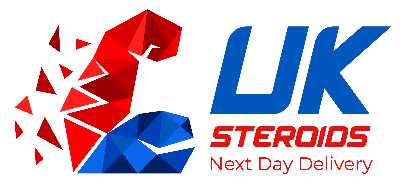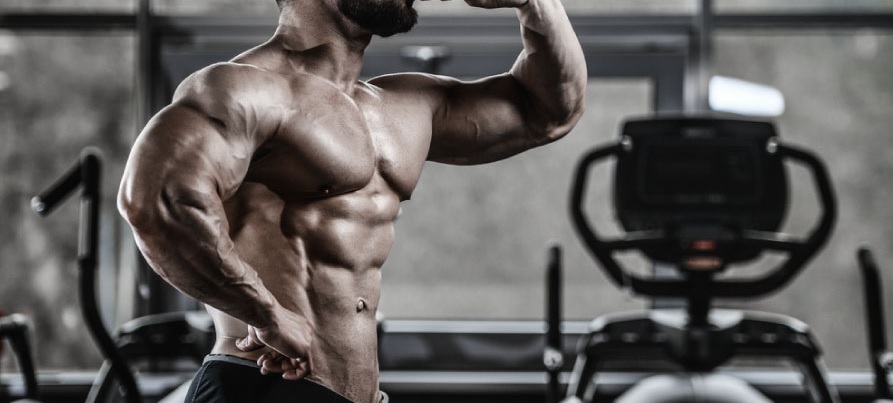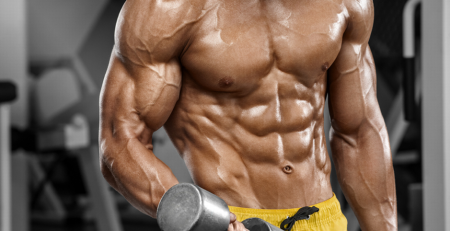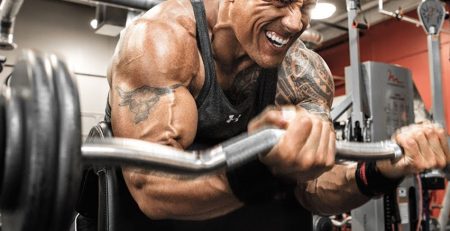Upgrade Your Mass by Eating Right
Your body needs a healthy source of energy in addition to hard effort, dedication, and a certain attitude to gain muscle growth. It is no secret that eating may be difficult sometimes. Because of this, we have written this post for you in the hopes that it may make this portion of your bodybuilding journey a little bit simpler. In a nutshell, the diet advises consuming 5–6 meals each day, 70% of which should be high-energy foods, while limiting the consumption of quick carbs and fats. Additionally, it advises following a balanced diet plan, consuming at least 3 litres of water every day, and ensuring that your consumption of carbs, protein, and fats is balanced.
The key to increasing calorie intake to grow muscle mass is to progressively increase daily calorie intake until the weekly weight gain is around 700g. The article also includes a list of simple meals that athletes may eat to add muscle growth to their bodies.
The Essential Tendencies of This Diet Are
-
Consuming 5–6 meals daily
Eating often is crucial for building muscle. Five to six meals each day are the ideal number. The digestive system is not overworked by frequent meals, and only small amounts of nutrients enter the circulation. Your muscles will receive nourishment all day long in this manner. The surplus nutrients won’t be utilised to rebuild muscle mass if the same quantity of food is consumed throughout three meals but instead will be stored as fat deposits that a high-calorie diet cannot remove.
-
Foods high in energy
To avoid taxing the digestive system, about 70% of the food consumed during the day should be as calorie-dense as feasible. In addition, if low-calorie foods are ingested more often, the digestion of nutrients is slower. Healthy fruits and vegetables don’t have to be eliminated from the diet, but their percentage should be lowered to 30% or less. Vegetable fibre, which is found in fruits and vegetables, increases intestinal contractions and prevents the digestion of high-calorie meals.
-
Lessening the amount of quick sugars and fats
Limiting the consumption of meals high in fat is crucial when dieting. Lard, fatty meats, butter, margarine, sausages, and other items fall under this category. The body primarily utilises carbs to build muscle growth, while fats are stored in fat cells called adipocytes with adequate nutritional intake. Consuming meals with quick carbs, such as sweet fruits, baked goods, and confectionary items, is also risky. Fast carbohydrates are absorbed more quickly in the digestive system, increasing the level of sucrose in the blood, even when there is an excessive intake of nutrients. When dieting, the body shouldn’t turn glucose into fat as a protection against the sugar increase.
-
Consuming Mode
Many metabolic processes start to move more quickly while someone is dieting, which calls for consuming more water. The ideal daily fluid intake is roughly 3 litres, taking into consideration the water in meals. You must never, ever allow your body to get dehydrated.
Foods High In Protein
Foods with a high protein content are rare in the natural world. In order of their importance to bodybuilders, these are the most widely available and well-liked:
Meat. During the diet, any lean meat may be ingested. Because of its low-fat content and simple digestion, poultry is favoured.
Seafood and fish. Fish oil, which is abundant in fatty fish and is not only healthy but beneficial for building muscle, is also good for you.
Dairy goods. The majority of your diet should consist of low-fat foods like kefir, cheese, yoghurt, cottage cheese, milk, etc.
Eggs. When dieting, 6 to 8 eggs per day are advised. There is no need for concern over a rise in cholesterol levels. It has been demonstrated that eggs have no impact.
Legumes. The primary plant sources of protein include peas, beans, and pulses. Nutritionists’ advice includes plant proteins in athletes’ meals despite their low nutritional value. Since soybeans have a significant level of hormonal activity, they are purposefully kept out of this list.
Nuts. In addition to protein, nuts also provide vitamins and important trace elements.
High Carbohydrate Foods:
Cereals are primarily composed of slow-digesting carbs, proteins, and essential minerals and vitamins. Oatmeal, buckwheat, maize, wheat and rice are some of the healthiest cereal options.
Pasta: Wholemeal flour or products manufactured from durum wheat flour should be used.
Limit your intake of white bread and increase your intake of black bread.
Cereals and muesli are not only nutritious, but they also provide an athlete’s diet with some variety.
Mushrooms and veggies: Of all the vegetables, potatoes are the most often consumed. This root vegetable can be used to make at least 100 meals. Potatoes, on the other hand, provide a plentiful supply of starch, which is metabolised extremely slowly. To prevent stomach disturbances, you should reduce your intake of potatoes and vegetables in general.
Fats: Not only should lipids be consumed, but so should Omega-3 fatty acids, according to recommendations. If not, any amount of vegetable fats and fish oil should be consumed.
Sports supplements can be used in conjunction with this diet. You may build muscle mass considerably more quickly and fulfil your body’s increased need for essential micronutrients as a result of exercise with the aid of sports nutrition.
Protein shakes are consumed before bed, right after waking up, in between meals, and after exercise. If a gainer is used in place of pure protein, it should only be consumed after exercise.












Leave a Reply